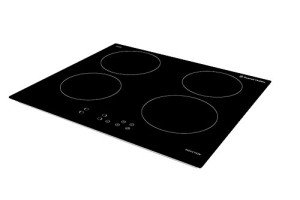Induction Hob Tips 101: Your Ultimate Guide For Beginners

Induction Hob Guide: A Comprehensive Overview
Induction hobs have become a popular option for modern kitchen areas, changing the way people cook. This guide will provide an in-depth appearance at what induction hobs are, how they work, their advantages and drawbacks, and considerations when acquiring one.
What is an Induction Hob?
An induction hob is a kind of cooktop that uses electro-magnetic energy to heat pots and pans straight, instead of cooking through a flame or by heating up the surface of the cooktop. ovensandhobs.uk is becoming progressively popular within both domestic and commercial cooking areas due to its effectiveness and security features.
How Does an Induction Hob Work?
The principle behind induction cooking depends on electro-magnetic induction. Here's how it works:
- Electromagnetic Field: When the induction hob is turned on, it produces an electromagnetic field beneath the cooktop surface.
- Product Response: If a ferrous (magnetic) material pot or pan is put on the hob, the magnetic field induces currents in the cookware.
- Heat Generation: These caused currents produce heat directly in the pot or pan, preparing the food within. The hob surface area remains cool to the touch since it is not being heated up directly.
Advantages of Using an Induction Hob
Induction hobs include a plethora of benefits:
- Energy Efficiency: Induction cooking is extremely efficient as nearly all the energy produced is moved directly to the pot or pan, resulting in quicker cooking times.
- Safety: The surface area of the induction hob stays cooler, decreasing the danger of burns. In addition, induction hobs turn off instantly when cookware is removed.
- Exact Temperature Control: Users can quickly change the heat settings, using much better control over cooking temperature levels.
- Easy to Clean: Because the induction hob itself does not get excessively hot, spills are less likely to burn onto the surface, making cleaning up a breeze.
- Modern Aesthetics: Induction hobs typically can be found in sleek, flat designs that fit well in modern cooking areas, boosting the overall aesthetic.
Downsides of Induction Hobs
While there are many advantages, it is likewise crucial to consider some disadvantages:
- Cost: Induction hobs are typically more expensive than traditional gas or electric cooktops.
- Cookware Compatibility: Specialized pots and pans is necessary; just ferrous pots and pans will work with induction hobs, implying some pots and pans might need to be replaced.
- Noise: Some users report a buzzing or humming sound when using induction cooking, especially at high settings.
- Power Limitations: Induction hobs might need particular electrical setups and can not be utilized with standard outlets if they have high power requirements.
Secret Features to Consider When Buying an Induction Hob
When considering purchasing an induction hob, it's important to evaluate several factors to guarantee you make the very best option for your kitchen.
| Function | Description |
|---|---|
| Size | Choose a design that fits your cooking area space and meets cooking requirements (2-5 burners). |
| Power Output | Look for greater wattage for quicker heating but guarantee compatibility with your power supply. |
| Control Type | Choose between touch controls or knobs, based upon your preference for ease of usage. |
| Security Features | Examine for automatic shut-off, kid locks, and residual heat indicators. |
| Design | Select a design that complements your kitchen area decor-- consider an integrated versus a countertop. |
| Warranty | Verify the warranty used-- longer guarantees recommend better item guarantee. |
FAQ
Can I use any pot or pan on an induction hob?
No, just pots and pans made of ferrous metals, such as cast iron or some stainless-steel, will deal with induction hobs. Aluminum, glass, and copper pots and pans are not suitable unless they have a magnetic base.
How does induction cooking affect cooking times?
Induction cooking is generally faster than gas or electric cooking, as it straight warms the pots and pans and not the cooktop. Many users report considerable time savings when boiling water or cooking meals.
Is induction cooking safe for kids?
Yes, induction hobs are considered safe for children. The primary surface area stays cool, and the hob automatically turns off when cookware is removed, minimizing the danger of burns or fire.
Do induction hobs require unique electrical setups?
Some induction hobs may require a devoted electrical outlet in order to work properly, particularly those with higher power output. It is necessary to seek advice from an electrician if you are not sure.
Induction hobs represent a significant development in cooking technology, delivering efficiency, speed, and safety advantages over standard cooking methods. While there are factors to consider to bear in mind, such as cost and pots and pans compatibility, the benefits can exceed the downsides for many users. As home cooking continues to evolve, induction hobs make certain to be at the forefront of modern cooking innovation.
Whether you are a culinary novice or an experienced chef, understanding how induction hobs work and what to try to find when purchasing one can greatly enhance your cooking experience. By weighing the advantages against the downsides and considering your specific needs, you can make a notified choice that will elevate your cooking to new heights.

